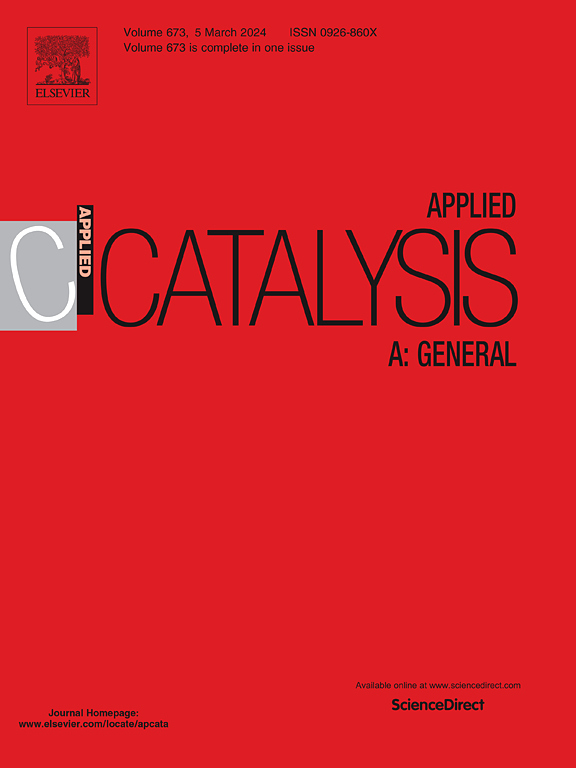Roles of NOx and the supported RuO2 in accelerating soot oxidation over RuO2/CeO2–ZrO2
IF 4.7
2区 化学
Q2 CHEMISTRY, PHYSICAL
引用次数: 0
Abstract
RuO2/CeO2–ZrO2 (Ru/CZ) shows high activity for soot oxidation in a NO2/O2 flow. The soot oxidation occurred at the soot-Ru/CZ interface and at the soot surface. It was shown that RuO2 increases the Ce3 +/Ce in CZ surface, and that dissociates the adsorbed O2 and supplies O atoms to CZ support. Adsorbed-NO3 (ad-NO3) contributed more than gaseous NO2 to soot oxidation. The investigation of activation energy and outlet NOx gas suggested that ad-NO3 ignited soot, and then CZ lattice oxygen and reactive oxygen species derived from CZ support mainly oxidized soot. Although the molar ratio of ad-NO3/soot was only 1 %, ad-NO3 accelerated soot oxidation. This was implied to be because ad-NO3 oxidizes soot through the redox cycle between ad-NO2 and ad-NO3 by CZ lattice oxygen. Soot oxidation over Ru/CZ is believed to be accelerated by the synergistic effect of the O2 dissociation by RuO2 and the ignition of soot by ad-NO3.
求助全文
约1分钟内获得全文
求助全文
来源期刊

Applied Catalysis A: General
化学-环境科学
CiteScore
9.00
自引率
5.50%
发文量
415
审稿时长
24 days
期刊介绍:
Applied Catalysis A: General publishes original papers on all aspects of catalysis of basic and practical interest to chemical scientists in both industrial and academic fields, with an emphasis onnew understanding of catalysts and catalytic reactions, new catalytic materials, new techniques, and new processes, especially those that have potential practical implications.
Papers that report results of a thorough study or optimization of systems or processes that are well understood, widely studied, or minor variations of known ones are discouraged. Authors should include statements in a separate section "Justification for Publication" of how the manuscript fits the scope of the journal in the cover letter to the editors. Submissions without such justification will be rejected without review.
 求助内容:
求助内容: 应助结果提醒方式:
应助结果提醒方式:


